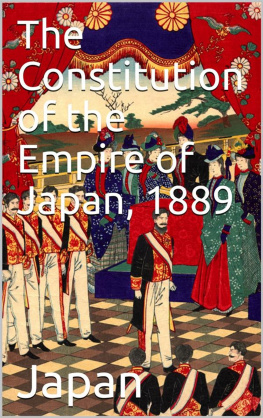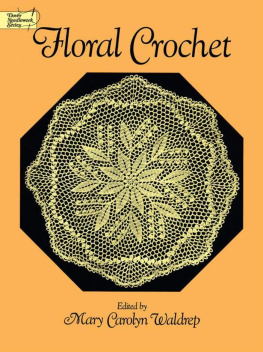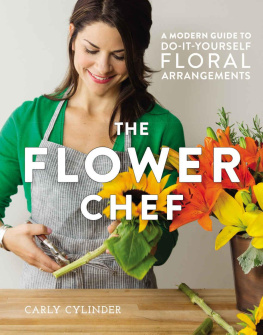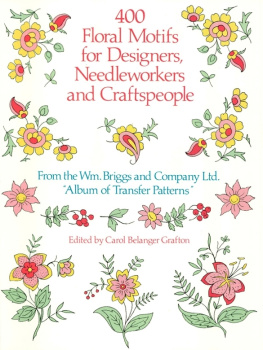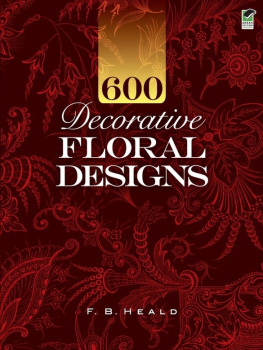FLORAL ART OF JAPAN
Japanese flower arrangement is much more than an elegant amusement it is an expression of what the Japanese call furyu to turn away from strife, and to lose oneself in the joys of peace and nature. It is the opposite of that other key aspect of Japanese culture Bushido,the way of the warrior. The virtues of Bushido are persistence, fidelity, endurance, bravery and activity those of furyu are subtlety, gentleness, restraint and repose. That they see no inconsistency or contradiction between these two ways of living is one of the most interesting characteristics of the Japanese people. This volume is a succinct and comprehensive guide to the history, theory and practice of this exquisite art. It explains the three fundamental forms of Japanese flower arrangment Shin, Gyoa nd So,as well as the proper arrangement of the tokonoma,the alcove where the flowers are displayed. It explains how one has to see the expressions and emotions in blossoms and branches to achieve the most harmonious combinations, and gives the history of the art going back to the Ashikaga Shogunate, describing the two great classical schools of Japanese flower arrangement the formal (rikkwa) and the natural (nageire) styles. It also deals with two new schools the heaven-earthman (ten-chi-jin) and literati (bunjin-ike) styles concluding with an illustrated chapter on how to arrange flowers. This is a book full of timeless serenity and beauty.
www.keganpaul.com
THE KEGAN PAUL JAPANESE TOURIST LIBRARY
Floral Artof Japan Issotei Nishikawa
Japanese Noh Plays Toyoitiro Nogami
Odori Kasyo Matida
First published 2005 by
Kegan Paul Limited
UK: P.O. Box 256, London WC1B 3SW, England Tel: 020 7580 5511 Fax: 020 7436 0899
E-Mail:
Internet: http://www.keganpaul.com
USA: 61 West 62nd Street, New York, NY 10023
Tel: (212) 459 0600 Fax: (212) 459 3678
Internet: http://www.columbia.edu/cu/cup
BAHRAIN:
Distributed by:
Marston Book Services Ltd
160 Milton Park
Abingdon
Oxfordshire OX14 4SD
United Kingdom
Tel: (01235) 465500 Fax: (01235) 465555
Email.
Columbia University Press
61 West 62nd Street, New York, NY 10023
Tel: (212) 459 0600 Fax: (212) 459 3678
Internet: http://www.columbia.edu/cu/cup
Kegan Paul, 2005
Printed in Great Britain
All Rights reserved. No part of this book may be reprinted or reproduced or utilised in any form or by any electric, mechanical or other means, now known or hereafter invented, including photocopying or recording, or in any information storage or retrieval system, without permission in writing from the publishers.
ISBN:0 -7103- 1023-4
British Library Cataloguing in Publication Data
Nishikawa, Issotei
Floral art of Japan. (Japan library)
1. Flower arrangement Japan
LTitle
745.92252
ISBN 0710310234
EDITORIAL NOTE
It is a common desire among tourists to learn something of the culture of the countries they visit as well as to see their beautiful scenery. To see is naturally easier than to learn, but flying visits merely for sightseeing hardly furnish the time or opportunity for more than a casual glimpse of the culture of any foreign people. This is specially true of Japan.
The Board of Tourist Industry recognizes the difficulty of attaining this high purpose, viz., to provide foreign tourists with accurate information regarding the various phases of Japans characteristic culture. It is endeavouring therefore to meet this obligation, as far as possible, by publishing this series of brochures.
The present series will, when completed, consist of more than a hundred volumes, each dealing with a different subject, but all co-ordinated. By reading therefore the entire series the foreign student of Japan may gain an adequate knowledge of the unique culture that has developed in this country through the ages.
For those who wish to follow up these studies with a closer investigation, bibliographies are appended, which we trust may be found reliable and authoritative guides in their study.
Board of Tourist Industry,
Japanese Government Railways
CONTENTS
I. FURYU AND FLOWER ARRANGEMENT
When I speak to my foreign friends of flower arrangement in Japan, what comes to my mind is the Japanese word fry. The Japanese call their tea ceremony and flower arrangement fry no asobi, or elegant amusement, which is, to their mind, quite different from going to the theatre, or playing tennis or golf. Without knowing therefore the true meaning of fry, it is impossible to grasp the spirit which underlies Japanese flower arrangement.
In former days, the word fry might have been understood very differently from what we understand by it now. Most Japanese now think of it as being in opposition to Bushid, or the Way of the Samurai. BushidO values bravery more than anything else, and applauds him who fights at the risk of his life. But the way of fry is to shun all strife and to lose oneself in the joys of peace.
The Japanese are essentially an artistic people. Therefore they are very impressionable. If then their passions are aroused they will engage in whatever they undertake regardless of the gain or loss involved. On the other hand, in order to seek relief from life's tension, they may sometimes go to the other extreme of bequeathing their entire possessions to their relatives,
of abandoning all the rights and duties of a husband, and of enjoying that peace of mind which comes only from a life devoid of all worldly desires. To the Japanese such a life of renunciation is one realization of fry in life, and cha-no-yu (tea ceremony) and ikebana (flower arrangement) are but expressions of this phase of life.
How can the love of flower arrangement be understood as fry ? Because it is the love of the peace of nature. Similarly, to lay out a garden around one's house may be taken as an act of fry, since its purpose is to provide the enjoyment of trees and stones, which symbolize the quietude of nature. When looking at some flower arrangement or a garden, Japanese often say that the style of the arrangement is quite in fry, or the design of the garden is out of fry. The term may also be applied to household goods, as one may often hear that such and such is not to be recommended, since it is not fry, although its shape or colour is very interesting.
What is then the meaning of furyiu in these cases, you may ask ? If an article is said to be fry, it is, as a rule, of imperfect shape or of poor and meagre appearance. When a branch of a tree is twisted or dwarfed instead of allowed to grow straight and luxuriant, or has but few scattered flowers instead of bearing many fully blown flowers ; or when a tree has become moss-covered, old and dying, such a branch or tree is said to be fry. And if the term is used in describing household goods, you may be sure that they are of a delicate nature, often crooked, and usually antiquated and frail.






